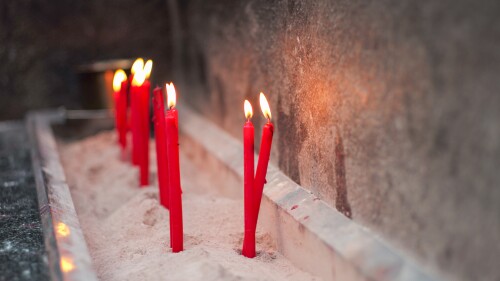Will the recent killings of al-Qaeda leaders Abu Omar al-Baghdadi and Abu Ayub al-Masri have any tangible effects on the “war on terror”? Vice President Joe Biden — who referred to the slayings as “devastating blows to Al Qaeda in Iraq” — certainly seems to think so.
The situation is reminiscent of when al-Qaeda leader Abu Laith al-Libi was killed in early 2008. Then, Congressman Peter Hoekstra issued a statement saying al-Libi’s death “clearly will have an impact on the radical jihadist movement.”
And who could forget all the hubbub surrounding the killing of that notorious decapitator, Abu Musab al-Zarqawi. Then, almost every major politician, including President Bush and Iraq’s Prime Minister Maliki exulted.
It is, of course, a good thing to eliminate terrorists. But will the deaths of individual Islamist leaders — including Ayman al-Zawahiri or Osama bin Laden himself — eliminate the ideology that creates them in the first place?
History provides an answer:
Consider the progress of the Muslim Brotherhood, the world’s largest and oldest Islamist organization. Founded in 1928 in Egypt by Tariq Ramadan’s grandfather, Hasan al-Banna, it originally boasted only six members. In the following decades, in part thanks to the radical writings of Sayyid Qutb — whom al-Qaeda quotes liberally in their many writings — the Brotherhood, though constantly clashing with Egypt’s government, grew steadily.
As leaders, both Banna and Qutb were eventually targeted and killed by the Egyptian regime. Yet the Brotherhood continued thriving underground. Then, to the world’s surprise, the partially-banned, constantly-suppressed Brotherhood managed to win 88 out of 454 seats in Egypt’s 2005 parliamentary elections — making them the largest opposition bloc in the government.
After two of its most prominent leaders were killed, after thousands of its members have been harassed, jailed, or otherwise eliminated, today the Brotherhood is stronger and more influential and secure than at any other time in its history.
Palestinian Hamas, itself an offshoot of the Brotherhood, furnishes another example. Founded in 1987 by Sheikh Ahmed Yassin, Hamas has since been labeled a terrorist organization by several governments, including the United States, most notably for its suicide operations against Israel. Yassin was eventually assassinated in March 2004.
The result? Far from fizzling away, Hamas, like the Brotherhood, went on to win a major landslide election in the January 2006 Palestinian parliamentary elections, establishing it even more than previously.
Then, of course, there is the Ayatollah Khomeini — the original poster-boy for radical Islam. Overthrowing Iran’s secular government in 1979, Khomeini transformed Iran into a theocratic state — precisely what all Islamists yearn to see for the rest of the world. From precipitating the American hostage crisis to issuing a fatwa condemning a novelist to death to taunting the U.S. —which he dubbed “the Great Satan” — for one decade, Khomeini was the West’s bane.
Today, over 20 years after his death, not much has changed in Iran: Sharia law still governs; Sharia-endorsed enmity towards the West still thrives. In fact, the only real difference is that Iran’s nuclear aspirations are nearly fulfilled.
There are numerous other historical examples, both past and present, where popular Islamist leaders were either killed (or died naturally), only for their Islamist movements to grow and consolidate more power.
Ayman al-Zawahiri summarizes this phenomenon well. Asked once in an interview about the status of bin Laden and the Taliban’s Mullah Omar, he confidently replied:
Jihad in the path of Allah is greater than any individual or organization. It is a struggle between Truth and Falsehood, until Allah Almighty inherits the earth and those who live in it. Mullah Muhammad Omar and Sheikh Osama bin Laden — may Allah protect them from all evil — are merely two soldiers of Islam in the journey of jihad, while the struggle between Truth [Islam] and Falsehood [non-Islam] transcends time (The Al Qaeda Reader, p.182).
Thus the West would do well to take a lesson from Hercules’ legendary encounter with the multi-headed Hydra-monster. Every time the mythical strongman lopped off one of its serpentine heads, two new ones grew in its stead. To slay the beast once and for all, Hercules had to cauterize the stumps with fire, thereby preventing any more heads from sprouting out.
Similarly, while the West continues to lop off Islamist “monster-heads” — most recently, al-Baghdadi and al-Masri — to achieve true and lasting victory, the fascist ideologies that generate these monster-heads must first be cauterized.
In the meantime, believing that the deaths of individual terrorist leaders (whom are seen as martyrs living in eternal bliss) will somehow hamper the progress of radical Islam is no less erroneous than thinking the deaths of American leaders will hamper the American way of life.
Raymond Ibrahim is associate director of the Middle East Forum, author of The Al Qaeda Reader, and guest lecturer at the National Defense Intelligence College.







